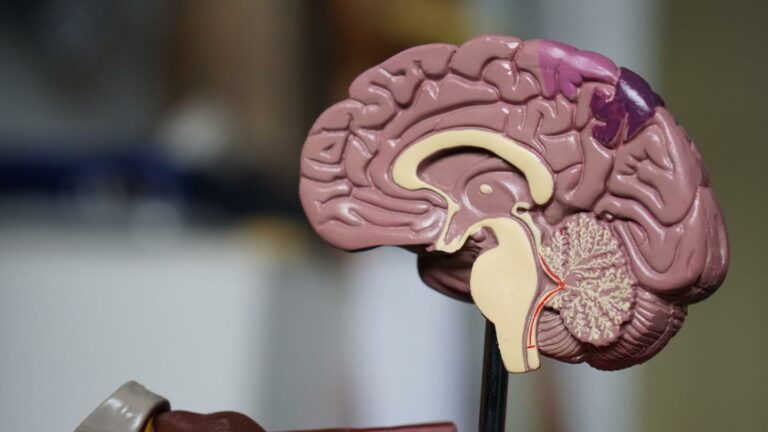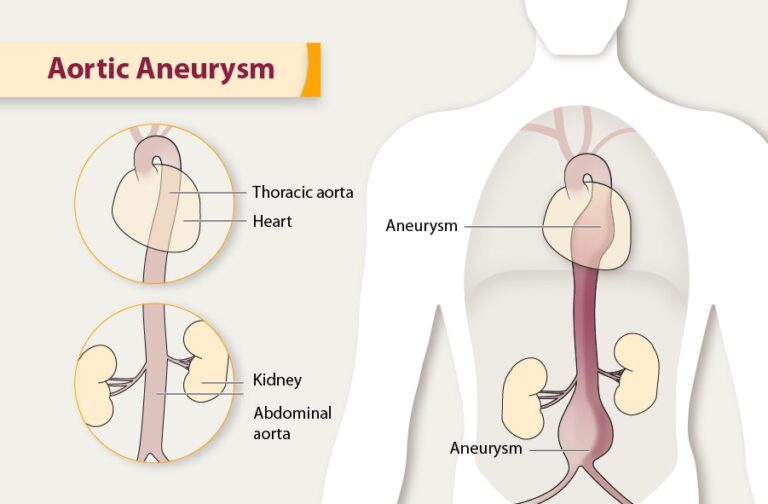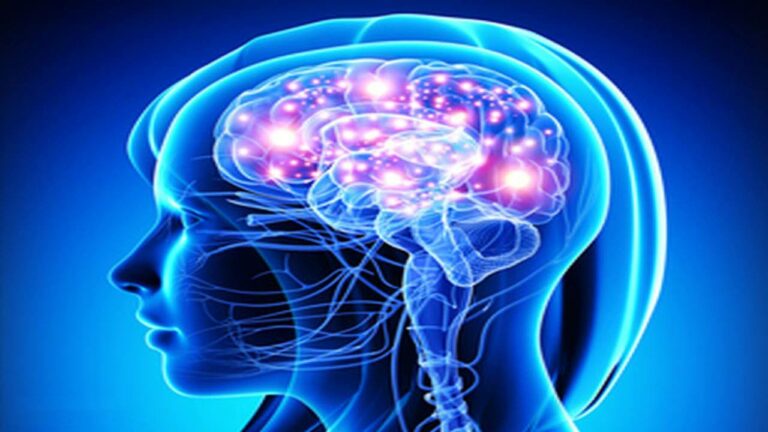Aneurysm: Types, Cause, and Symptoms
Author: Shiela Lupiba
Shiela Lupiba
Category: Health

Aneurysm is a swollen or bulging area in the wall of a blood vessel, such as an artery. Aneurysms can form anywhere in the circulatory system, but they most commonly form along the aorta (the body’s main artery that runs the length of the trunk) and in brain blood vessels.
An aneurysm’s most serious threat is that it will burst and cause a stroke or massive bleeding, both of which can be fatal. A large aneurysm can disrupt your blood flow and cause blood clots.
It’s critical to get it diagnosed and treated as soon as possible. Aneurysms frequently have mild or no symptoms, so routine exams can assist your doctor in looking for warning signs.
TYPES
Aneurysms are classified by their location in the body. The arteries of the brain and heart are the two most common sites of a serious aneurysm. There are three types of aneurysms: abdominal aortic, thoracic aortic, and cerebral.
- Abdominal Aortic

An abdominal aortic aneurysm is an enlarged area in the lower part of the major blood vessel that supplies the body with oxygen and nutrients (aorta). The aorta is a blood vessel that runs from the heart to the center of the chest and abdomen.
- Thoracic Aortic

A thoracic aortic aneurysm is a serious health risk because it can rupture or dissect (tear), resulting in life-threatening internal bleeding. A thoracic aortic aneurysm can often be repaired with surgery or other less invasive techniques if detected in time.
- Cerebral Aneurysm

A cerebral aneurysm (also known as a brA cerebral aneurysm (also known as a brain aneurysm) is a weak or thin spot in a cerebral artery that balloons or bulges out and fills with blood. The pressure from a bulging aneurysm can put pressure on nerves or brain tissue. It may also burst or rupture, allowing blood to enter the surrounding tissue (called a hemorrhage).
CAUSES
Any condition that weakens your artery walls has the potential to cause one. Atherosclerosis and high blood pressure are the most common causes. Aneurysms can also be caused by deep wounds and infections. Alternatively, you could be born with a weakness in one of your artery walls.
- Atherosclerotic disease – Aneurysms can be caused by atherosclerotic disease. Plaque buildup in the arteries of people with atherosclerotic disease. Plaque is a hard substance that damages the arteries and prevents blood from flowing freely.
- Highblood pressure – Aneurysms can also be caused by high blood pressure. The force of your blood as it flows through your blood vessels is measured by the amount of pressure it exerts on your artery walls. When blood pressure rises above a normal level, it can enlarge or weaken the blood vessels.
SYMPTOMS
A brain aneurysm rarely causes any symptoms unless it bursts (ruptures).
Unruptured Brain
Unruptured brain aneurysms occasionally cause symptoms if they’re particularly large or press against tissues or nerves inside the brain.
Symptoms of an unruptured brain aneurysm can include:
- Visual disturbances such as loss of vision or double vision
Some aneurysms are symptomatic because they press on adjacent structures, such as nerves to the eye. They can cause visual loss or diminished eye movements , even if the aneurysm has not ruptured.
- Pain above or around your eye
Symptoms of an unruptured aneurysm include: headache or pain behind or above the eye , which can be mild or severe. blurred or double vision.
- Numbness or weakness on 1 side of your face
A small one may not cause symptoms. But as the aneurysm grows, it can press on brain tissues and nerves, and lead to numbness on one side of the face. You may also feel pain in one eye or have double vision. If a brain aneurysm leaks or bursts, it can cause bleeding in the brain.
- Difficulty speaking
If an aneurysm gets very large, it may produce pressure on the normal brain tissue or adjacent nerves. This pressure can cause difficulty with vision, numbness or weakness of an arm or leg, difficulty with memory or speech, or seizures
- Headache
Ruptured Brain
Symptoms of a ruptured brain aneurysm usually begin with a sudden agonising headache. It’s been likened to being hit on the head, resulting in a blinding pain.
Symptoms of a ruptured brain aneurysm usually begin with a sudden agonising headache.
It’s been likened to being hit on the head, resulting in a blinding pain unlike anything experienced before.
Other symptoms of a ruptured brain aneurysm also tend to come on suddenly and may include:
- feeling or being sick – Other symptoms of a ruptured brain aneurysm also tend to come on suddenly and may include: feeling or being sick.
- a stiff neck or neck pain – Blood from a ruptured aneurysm is very irritating when it leaks into the brain and it causes an intense headache. Blood leaking from a ruptured aneurysm into the cerebrospinal fluid causes inflammation of the meninges, the membranes that surround the brain, resulting in a stiff and painful neck.
- sensitivity to light – There is definitely some crossover in the symptoms of migraines and ruptured brain aneurysms. Symptoms such as nausea and vomiting, blurred or double vision, and sensitivity to light occur in both conditions
-
blurred or double vision – The same with unruptured brain anuerysm, ruptured aneurysm can also affect the vision of a person.
-
loss of consciousness – The loss of consciousness at the time of the hemorrhage is caused by global ischemia , resulting from a lack of perfusion pressure during aneurysmal rupture. The duration of loss of consciousness might reflect the severity of this perfusion deficits and global ischemia.
- fits (seizures) – Despite improved microsurgical techniques and antiepileptic drug prophylaxis, a significant proportion of patients undergoing aneurysm clipping still experience seizures. Seizures may occur years after aneurysm repair, and careful monitoring for late complications remains important.
Prevention
A healthy diet rich in fruits, whole grains, and vegetables may help prevent
the formation of an aneurysm. Protein-rich meats and poultry that are low in
saturated fat and cholesterol are also good choices. Low-fat dairy products
are also advantageous. Regular exercise, particularly cardiovascular exercise,
can promote healthy blood circulation and blood flow through the heart,
arteries, and other blood vessels.
Anyone who has been diagnosed with an aneurysm and is on a conservative
treatment plan can work with a healthcare practitioner to address any risk
factors













